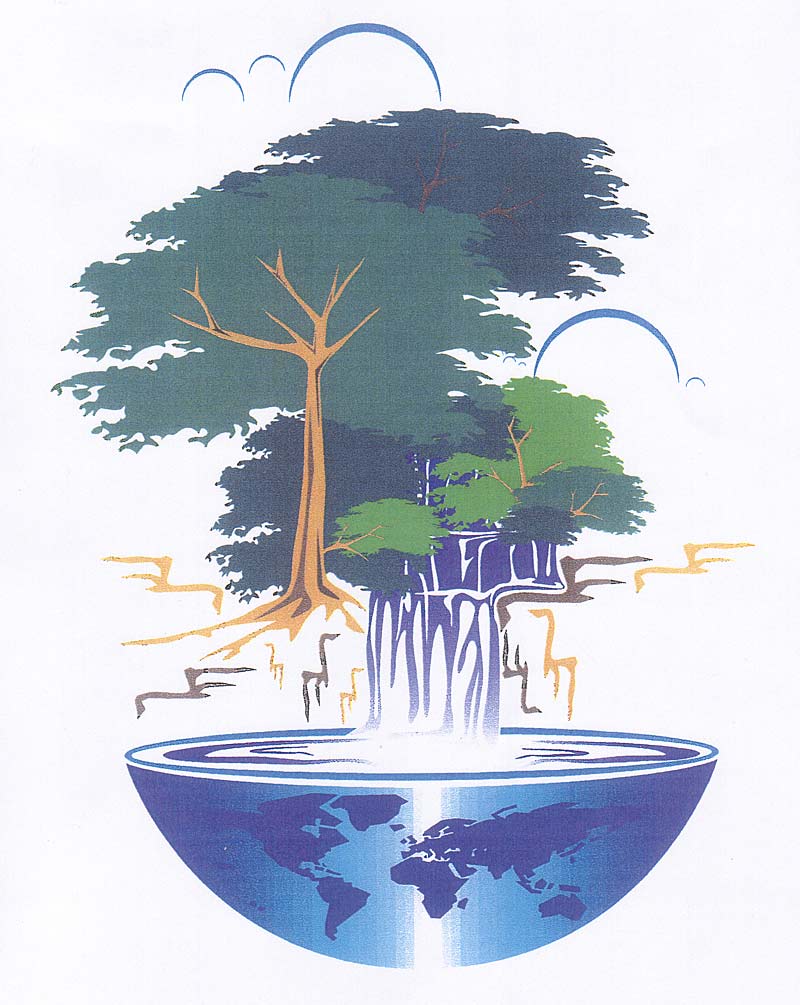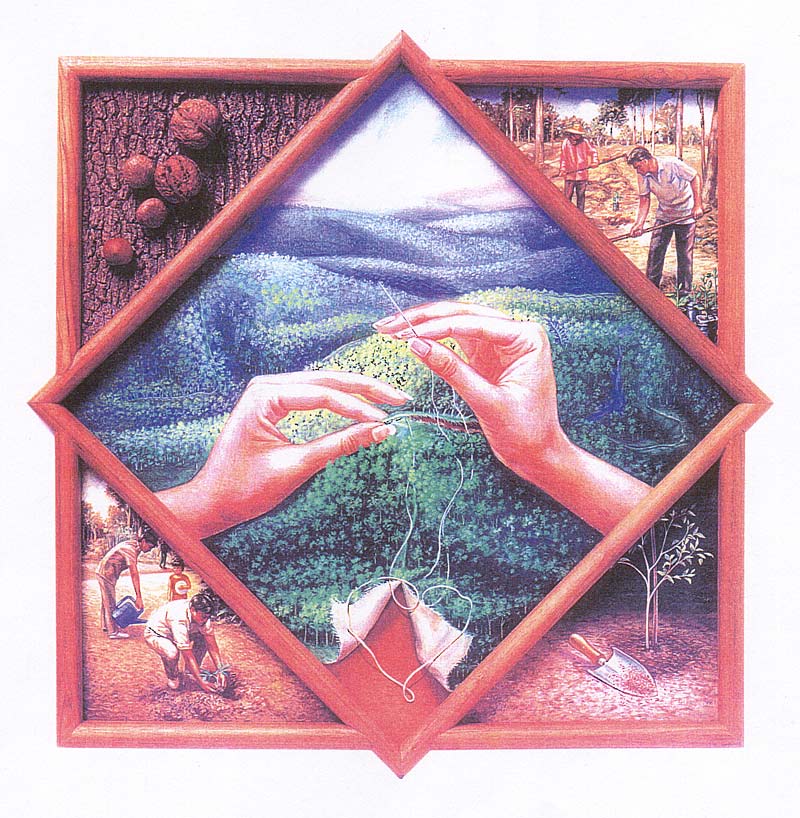Afforestation Project KHAO NOI
Khao Noi, Province Tak, near the village Sattalung
- Start of the project in March 2003
- Total area with papers approx. 5 rai
- In hectares: the land has papers but is not yet surveyed, about 1 hectare
- Planted area: in the treeless gaps we planted about 700 trees in July 2003
- Current objectives: young forest management, increasing diversity
- Local caregiver: Members of the Thangbunrod family from Sattalung
Micro-projects are also valuable: they improve the micro-climate on a small scale in the local area, set an example and encourage imitation.
Forest Reserve Khao Noi
Situation:
In 1985 the forest area was cleared and for a short time used for corn, beans and peanuts. Afterwards the land was left fallow, as there was no more water there and the tropical soils are known to be leached out quickly. Eucalyptus trees were then planted in some areas for rapid timber production. The reappearing forest in the remaining areas was increasingly used as forest pasture and burned down again several times.
Target:
Reforestation i.e. completion of the tree population with exclusively indigenous tree species to preserve the remaining local diversity in plant and animal life and to improve the regional micro-climate and water balance. Re-establishment of rare tree species such as Machang (มะช้าง), a forest fruit tree and Marün (มะรื่น), for the extraction of forest nuts.
Vision:
Lush, diverse tree and plant population in the greatest possible variety of species with ferns and orchids that in 20 years can serve as a "seed bank" for other projects. This example of reforestation here in Sattalung should be an incentive for the local population to think about the connections between forest and water and the beauty of nature. This could be a motivation to plant more trees again.
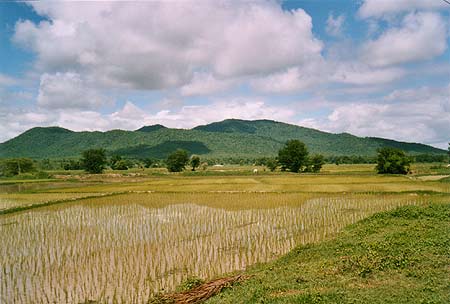
Not far from the village of Sattalung, in Tak province (northern Thailand), about 500 m away from the last houses of the village, a gentle hill (called Khao Noi, small mountain in Thai) rises in the south, which is a prelude to even more distant, higher, forested mountains. These forested mountains were all cleared in 1982 - 1984. Meanwhile, in the mountains at Khao Pla Möön (เขาพระเมิน), (see picture), any logging is prohibited or is considered illegal.
For the information of all villagers, some of whom pass "our forest" daily, we attached these information boards in Thai language (see picture) to the remaining larger trees along the field path:
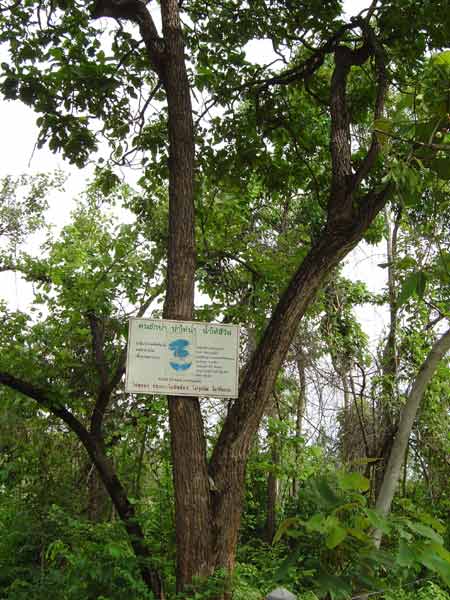
If people love the forest - the forest gives water - water is life!
คนรักป่า ป่าให้น้ำ น้ำให้ชีวิต
It is forbidden to cut down trees in this forest.
It is protected for future generations.
It is protected for future generations.
ป่าผืนนี้ห้ามตัดต้นไม้
อนุุรักษ์ป่าไม้
เพื่อลูกหลานไทย
อนุุรักษ์ป่าไม้
เพื่อลูกหลานไทย
The forest is like a sponge, it stores
the water and keeps the earth moist.
If there are big trees in the forest again, it helps the whole region and brings back the balance.
The forest prevents flooding and stops strong winds
If there is forest, there is water and the streams come back.
The forest gives abundance to all living things
the water and keeps the earth moist.
If there are big trees in the forest again, it helps the whole region and brings back the balance.
The forest prevents flooding and stops strong winds
If there is forest, there is water and the streams come back.
The forest gives abundance to all living things
ต้นไม้เปรียบเหมือนฟองน้ำ
ซับน้ำ ให้ความชุ่มชืน
ป่ามีไม้ใหญ่ ช่วยธรรมชาติให้สมบูรณ์
กันน้ำท่วม บังลมได้
มีธรรมชาติ มีน้ำ มีคลอง
สร้างความอยู่ดี กินดี ให้ทุกชีวิต
ทั้งคน และสัตว์
ซับน้ำ ให้ความชุ่มชืน
ป่ามีไม้ใหญ่ ช่วยธรรมชาติให้สมบูรณ์
กันน้ำท่วม บังลมได้
มีธรรมชาติ มีน้ำ มีคลอง
สร้างความอยู่ดี กินดี ให้ทุกชีวิต
ทั้งคน และสัตว์
If there is forest - there is always water
and gives wealth to all people.
มีต้นไม้ มีน้ำตลอด ให้ทุกคนมั่งคั่ง
Please do not hunt here - Please do not light a fire -
Please do not throw away waste here
Please do not throw away waste here
กรุณา ไม่ยิงสัตว์ - ไม่จุดไฟ - ไม่ทิ้งขยะ่
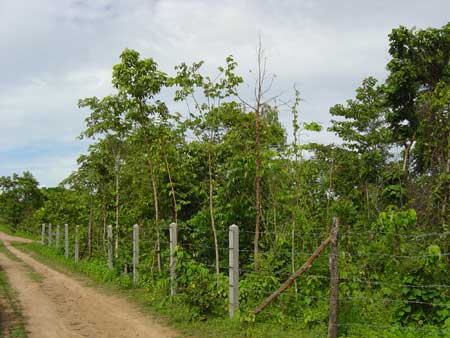
At the Khao Noi we then planted native tree species into the treeless gaps during the rainy season of 2003, such as มะึค่าลิง (Makah Ling), ประดู่ป่า (Pradu), ไม้แดง (Maidäng), มะค่าหลวง (Makah Luang), มะยมหอม (Maijom hom), มะยมหิน (Maijom hin), ต้นคูณ (Ton Khun), หางนกยูง (Hang Nok Jung), กระเชาะ (Gratscho), among others.
Unfortunately a fire on February 1, 2004 destroyed many young trees that we had planted in the rainy season of 2003. The forest in Thailand is partly adapted to the recurring fires, but smaller trees, which are not thick enough and can still store little water in their bark, cannot survive a grass fire.
Good water comes from the forest. The forest is the water regulator, in the rainy season it stores the water and in the dry season it slowly releases it again. The wealth of a people lies in the forest. It contains the most precious and valuable element we have: Water!
Let us keep a clear goal in mind: diverse, intact forest, lush green on this piece of earth ultimately serves everyone: Nature as a whole, the water balance, the regional climate, the global climate, and ultimately - if he understands it - as part of this nature: Man!
.jpg)









